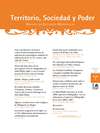Resumen
Resumen: Hildegard de Bingen ha sido el tema de muchos estudios y el objeto de este artículo es profundizar en la figura de Hildegard en su contexto social. Pienso que Jutta es una figura clave para entender a Hildegard. A mi juicio, algunas facetas de sus personalidades fueron parcialmente censuradas en las fuentes biográficas, encargadas por abades y escritas por monjes; por ejemplo, el conocimiento y práctica de medicina. De hecho, las curaciones de enfermos son presentadas siempre como milagros, de acuerdo con los tópicos o lugares comunes de la hagiografía. Empero, la medicina practicada por mujeres, considerada como sabiduría popular y unida parcialmente a rituales mágicos, es asumida, en el siglo XII, en claustros monacales por mujeres que proceden de familias nobiliarias germanas y la actividad curativa estará estrechamente ligada a la rigurosa vida ascética, experiencia mística y don de profecía. El magisterio es ejercido por mujeres; así, conocimiento y experiencia son transmitidos entre ellas: una viuda, Jutta e Hildegard sucesivamente. Hildegard obtuvo la bendición papal para desempeñar su misión, ejerció inusitada autoridad y tuvo gran libertad. Hubo muchas mujeres con experiencia mística, pero ninguna gozó de tantos privilegios como Hildegard.
Palabras clave: Mujeres, sabiduría, vida monástica, poder.
Abstract: Hildegard of Bingen has been the subject of several studies. The purpose of this article is to get inside the figure of Hildegard into her social context. On the face of it, I think tha Jutta is a key figure to understand Hildegard. In my opinion, some facets of their personalities were censured partly in the biografical sources, entrusted by abbots and written by monks; for example, the knowledge and the practice of medicine. In fact, the cures of ills are presented always as miracles, according to the topics or commonplaces of the hagiography. And yet, the medicine practised by women, considered as popular wisdom and partially related to the magical rituals, is assumed, in the 12th century, in monastic cloisters by women who come from the noble german families, and the curative activity will be closely related to rigorous ascetic life, mystic experience and talent for prophecy. The teaching is exercised by women, thus knowledge and experience are transmited among women: a widow woman, Jutta and Hildegard successively. Hildegard had papal blessing to accomplish her mission, and she had unusual authority and freedom. There were many women with mystic experiences, but none of them had so many privileges as Hildegard. All seems to indicate that Hildegard thought that the noble nun Richaldis of Stade would be her successor, but that was not the case, because the chain was broken by ecclesiastical men who moved Richaldis away from Hildegard.
Keywords: Women, wisdom, monastic life, power.

